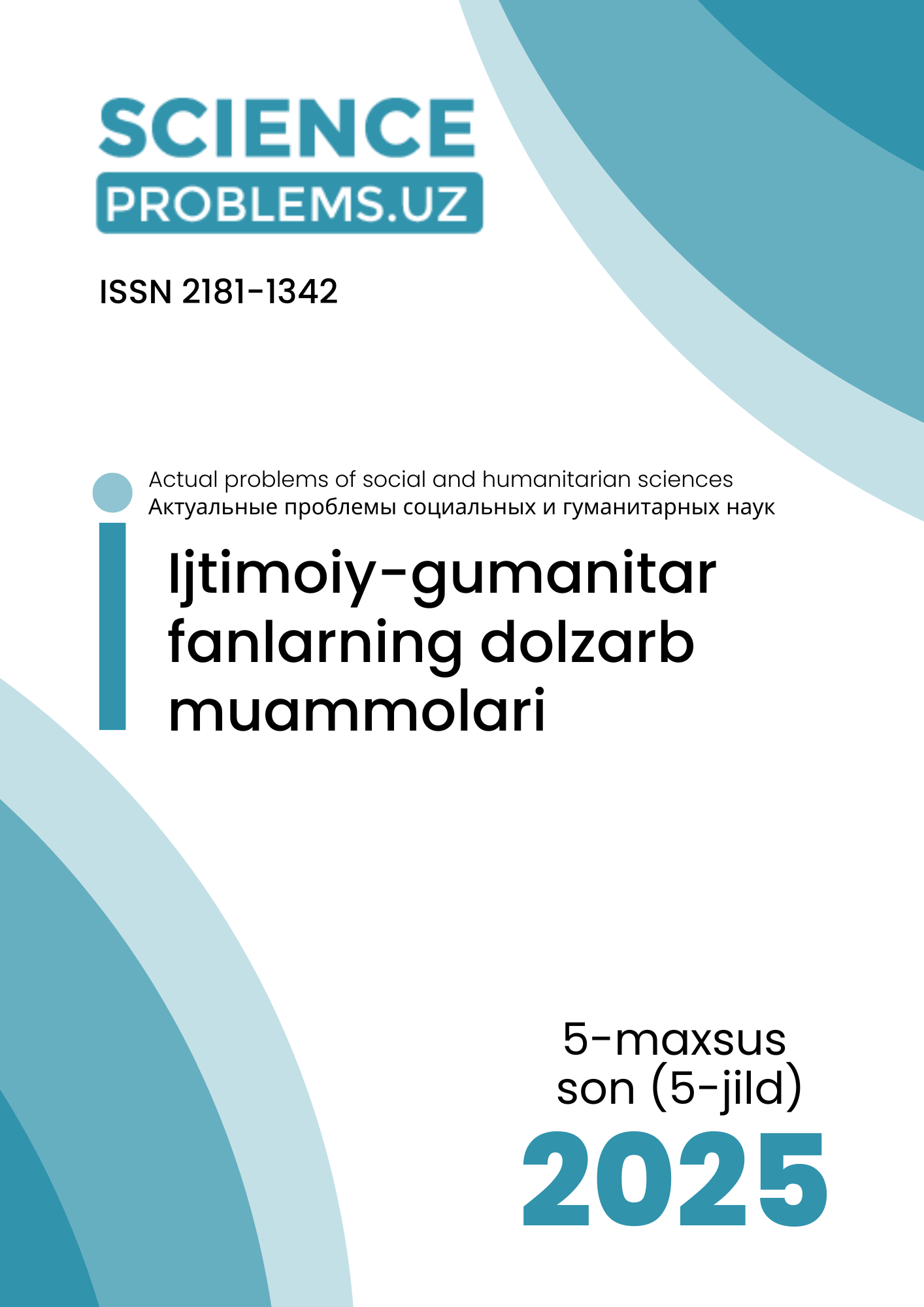METAFORIK YANGILIKLAR SEMANTIKASINING LINGVOKOGNITIV ASPEKTI TAHLILI
Kalit so'zlar
https://doi.org/10.47390/SPR1342V5SI5Y2025N26Kalit so'zlar
metaforik yangiliklar, semantika, lingvokognitiv jihat, kognitiv jarayonlar, til rivojlanishi, tasavvur qilish.Annotasiya
Metaforik yangiliklar tilning rivojlanishida, xususan yangi maʼnolar va iboralar hosil boʼlishida muhim rol oʼynaydi. Bu metaforik oʼzgarishlar koʼpincha dunyoni qanday tasavvur qilishimiz va tushunishimizni shakllantiruvchi kognitiv jarayonlar taʼsirida yuzaga keladi. Metaforik yangiliklarning lingvokognitiv jihati, bu iboralar qanday tuzilishi va tilni ishlatuvchi odamlar tomonidan qanday qayta ishlanishini oʼrganishga qaratilgan. Metaforalar, ayniqsa yangilanganlari, nutq soʼzlovchilarining aqliy konstruksiyalarini aks ettiradi va tilni ishlatishning kognitiv mexanizmlari hamda ularga taʼsir etuvchi ijtimoiy kontekstlar haqida tushuncha beradi. Ushbu maqola metaforik yangiliklarni yaratish va talqin qilishda mavjud boʼlgan lingvokognitiv asosni tahlil qilishga, ularning zamonaviy kommunikatsiyadagi ahamiyatini va metafora tushunishning kognitiv jihatlarini muhokama qilishga qaratilgan.
Manbalar
1. Lakoff G., & Johnson, M. Metaphors We Live By. Chicago: University of Chicago Press, 1980.
2. Fauconnier G., & Turner M. The Way We Think: Conceptual Blending and the Mind’s Hidden Complexities. New York: Basic Books. 2002.
3. Kövecses Z. Metaphor: A Practical Introduction. Oxford: Oxford University Press, 2002.
4. Gibbs R. W. The Cambridge Handbook of Metaphor and Thought. Cambridge: Cambridge University Press, 2008.
5. Reddy M. J. The conduit metaphor: A case of frame conflict in our language about language. In A. Ortony (Ed.), Metaphor and Thought (pp. 164–201). Cambridge: Cambridge University Press, 1979.








